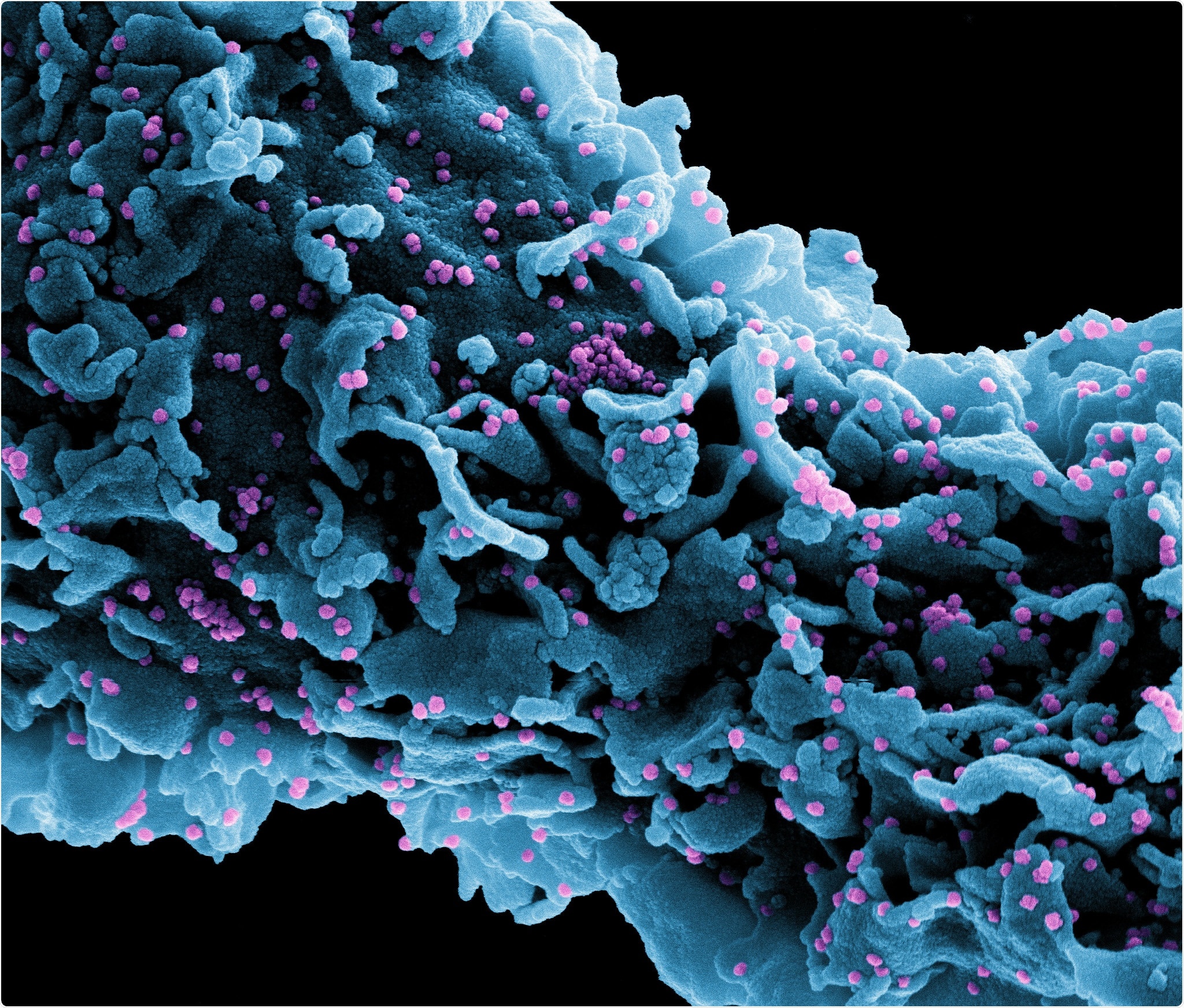Viruses originating from birds and animals are known as zoonotic viruses. When these viruses are transmitted to humans through direct or indirect contact with infected populations, they cause a zoonotic spillover. Approximately 70% of infectious diseases over the last three decades are zoonotic. Because no immediate diagnosis or effective cure is available for the new virus, outbreaks, epidemics, and pandemics are likely to spread rapidly.
Viruses and nanoparticles are in a comparable size range. The latter having attractive properties such as small size, large surface-to-volume ratio, susceptibility to modification, and intrinsic viricidal activity. Therefore, scientists functionalize nanoparticles to act against these pathogenic viruses in a clinical strategy. In a recent review published in the journal Microbial Pathogenesis, researchers look at the novel solutions against zoonotic viruses provided by nanotechnology.

Nanomaterials are described as ‘materials containing structural nanoelements which considerably improve or cause qualitatively new physical, chemical, biological, mechanical, and other properties.’ Excellent properties like the high surface area to volume ratio, high thermal conductivity, and faster signal transduction make the nanomaterials useful in clinical and biomedical applications. For example, nanomaterials in viral diagnostics have advanced sensitivity, the capability of multiplexing, and cost-effectiveness.
Detection of viruses
Rapid and reliable diagnostics is crucial to defend against any viral outbreak, especially in the case of a highly virulent strain. Conventional molecular diagnostic techniques rely on the amplification of the viral nucleic acids. However, these methods are time-consuming processes with lower specificity and accuracy - nanotechnology can remarkably address the challenges. Immobilizing specific ligands on the nanometric scale, nanotechnology is employed for molecular imaging and profiling in diagnostics.
Nanosensors, for rapid biosensing of virus-associated proteins, are advances in nanotechnology that are widely employed. Nano-sensors are nanoparticle-based devices that can sense signals at a nanoscale comprising three major components; a signal transducer, a receiver, and a detector with a monitoring output. Using these highly sensitive nano-sensors along with other analyzing instruments increases the detection efficiency and also helps deal with the point-of-care type (POCT) pervasive detection systems.
Novel magnetic relaxation nanosensors are used to rapidly detect influenza-associated proteins, adenovirus, and Herpes simplex virus (HSV). Few examples include: multiplex colorimetric paper-based analytical devices using silver nanoparticles can detect MERS-CoV, gold nanoparticles and quantum dots stain for HPV (Human papillomavirus), and chiroimmunosensors can detect infectious bronchitis virus.
Because of the miniaturization, only smaller sample volumes are required, with results produced in fast reaction time. Often sample preparation is unnecessary - yielding high volume results when nanotechnology is coupled with the conventional diagnostic tests, such as higher sensitive DNA coated nanoparticles than ELISA.
The sensitive detection of SARS-CoV-2 by extracting the viral RNA is improved by the use of poly (amino ester) with carboxyl groups (PC)-coated magnetic nanoparticles (pcMNPs) in RT-PCR reactions. The analysis takes 20 manually or through automotive high throughput screening. This straightforward approach with good efficiency decreases the turn-around time as well as human handling of the machine. Similarly, iron oxide silica particles (Fe3O4-Silica) are used to isolate nucleic acid from ZIKA viral sample with better efficiency and advantages.
Using Oxford Nano-pore MinION, a nanopore sequencing technology (a nanopore chamber with a nanoscale diameter used to recognize a DNA molecule), scientists have demonstrated the metagenomic detection of the chikungunya virus (CHIKV), Ebola virus (EBOV), and hepatitis C virus.
Protection against the viruses
Fast detection and diagnosis is a key step in protecting the individual and the community against pathogenic infection. This is enabled by many actions: identify early the microorganism, nanocarriers that activate the immune response, nanotechnology-based vaccines, use of anti-viral nanomaterials, etc.
For example, the gold nanoparticle-adjuvanted S-protein is reported to induce a strong antigen-specific IgG response against the SARS-CoV-2. The gold nanoparticle acts as both the carrier and the adjuvant for the immunization. Many such nanoparticles-based vaccines are under different stages of development, depending on the immunogenic properties.
In the COVID-19 management, nanotechnology contributes to multiple measures, in addition to synthesizing nano-drugs and rapid and robust sensors. Ultrafine filters for masks and air purification using nanotechnology protects from the SARS-CoV-2 during the daily routine in the ongoing pandemic. The negatively charged graphene oxide (GO) and reduced graphene oxide (rGO) can be used in PPE kits as they effectively disrupt the lipid membrane of positively charged coronaviruses.
Coating surfaces with titanium, bismuth, or silver nanomaterials inhibits the attachment of microbes to these surfaces.
Medication for the viral infections
Nanomaterials are used as drug carriers, with exceptional outcomes due to their enhanced pharmacokinetic profile, higher drug retention time, biocompatibility, and lesser side effects during drug delivery.
So far, there is no specific treatment for human coronavirus infection. While anti-viral agents are repurposed to find therapeutic solutions, nanotechnology applications provide ‘a promising new arena for multifunctional agents with programmable properties that can revolutionize treatment strategies for viral infections,’ as well as nano-based vaccines.
Cationic carbon dots conjugated with curcumin inhibits proliferation in coronaviruses. Glutathione-capped silver sulfide nanoclusters also inhibit PEDV (porcine epidemic diarrhea virus) and coronaviruses. A biomimetic nanoparticle, such as a nanosized platelet-derived extracellular vesicle, specifically targets inflammatory cells with anti-inflammatory drugs. Virus-like nanoparticles (VLP) (serve as a drug carrier for nanosized therapeutics) and mRNA therapy are other advanced nanotherapeutic approaches.
The review presents a list of the properties of different nanomaterials for the treatment and detection of zoonotic viral infections.
Conclusions
The threat of another pandemic is imminent, yet the ability to control a crisis, innovate and develop modern technologies, particularly exploring a field like nanotechnology, can be useful in better management of future outbreaks, the researchers conclude.
Journal reference:
- Sankar Ganesh Ramakrishnan, Becky Robert, Anisha Salim, Padma Ananthan, Muthusaravanan Sivaramakrishnan, Sadhasivam Subramaniam, Sivarajasekar Natesan, Rahul Suresh, G. Rajeshkumar, J. Prakash Maran, Naif Abdullah Al-Dhabi, Ponmurugan Karuppiah, Mariadhas Valan Arasu, Nanotechnology based solutions to combat zoonotic viruses with special attention to SARS, MERS, and COVID 19: Detection, protection and medication, Microbial Pathogenesis, https://doi.org/10.1016/j.micpath.2021.105133, https://www.sciencedirect.com/science/article/pii/S0882401021004071